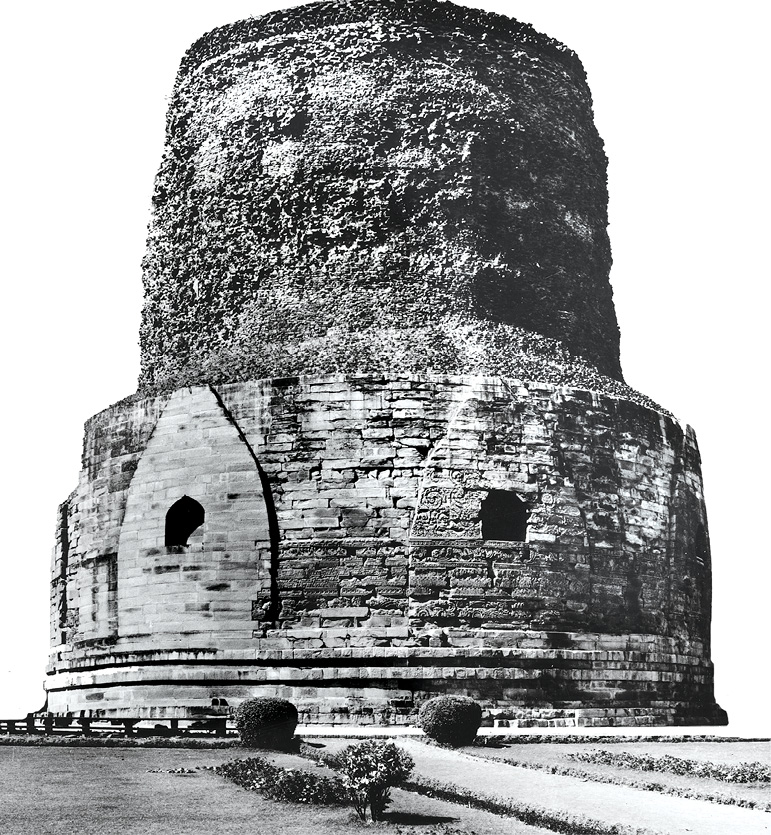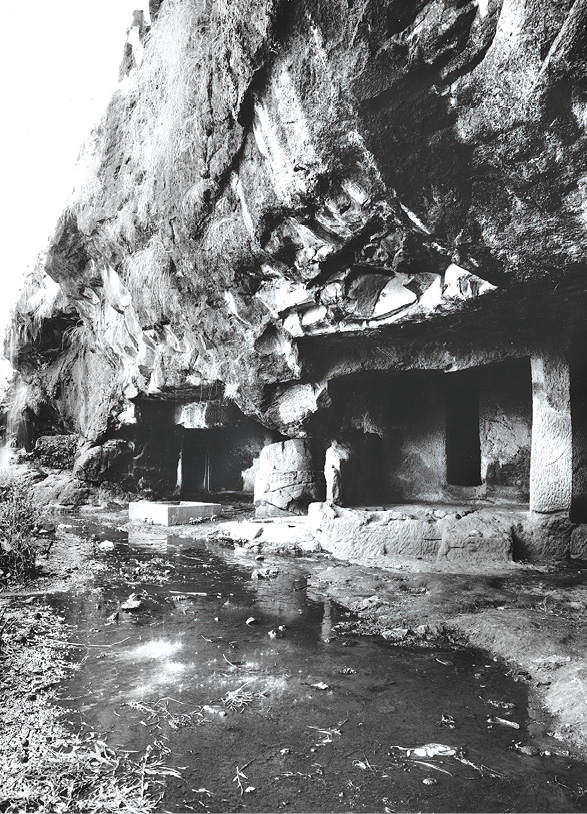Table of Contents
Anagha’s school trip

This was the first time Anagha was going on a school trip. They boarded the train from Pune (in Maharashtra) late at night, to go all the way to Varanasi (in Uttar Pradesh). Her mother, who came to see her off at the station, told the teacher: “Do tell the children about the Buddha, and take them to see Sarnath as well.”
The story of the Buddha
Siddhartha, also known as Gautama, the founder of Buddhism, was born about 2500 years ago. This was a time of rapid change in the lives of people. As you saw in Chapter 5, some kings in the mahajanapadas were growing more powerful. New cities were developing, and life was changing in the villages as well (see Chapter 9). Many thinkers were trying to understand these changes in society. They also wanted to try and find out the true meaning of life.
The Buddha belonged to a small gana known as the Sakya gana, and was a kshatriya. When he was a young man, he left the comforts of his home in search of knowledge. He wandered for several years, meeting and holding discussions with other thinkers. He finally decided to find his own path to realisation, and meditated for days on end under a peepal tree at Bodh Gaya in Bihar, where he attained enlightenment. After that, he was known as the Buddha or the Wise One. He then went to Sarnath, near Varanasi, where he taught for the first time. He spent the rest of his life travelling on foot, going from place to place, teaching people, till he passed away at Kusinara.
The Buddha taught that life is full of suffering and unhappiness. This is caused because we have cravings and desires (which often cannot be fulfilled). Sometimes, even if we get what we want, we are not satisfied, and want even more (or want other things). The Buddha described this as thirst or tanha. He taught that this constant craving could be removed by following moderation in everything.
He also taught people to be kind, and to respect the lives of others, including animals. He believed that the results of our actions (called karma), whether good or bad, affect us both in this life and the next. The Buddha taught in the language of the ordinary people, Prakrit, so that everybody could understand his message.

The stupa at Sarnath.
This building, known as a stupa, was built to mark the place where the Buddha first taught his message. You will learn more about stupas in Chapter 11.
What was the language used to compose the Vedas?
He also encouraged people to think for themselves rather than to simply accept what he said. Let us see how he did this.
The story of Kisagotami
Here is a famous story about the Buddha.
Once there was a woman named Kisagotami, whose son had died. She was so sad that she roamed through the streets of the city carrying the child with her, asking for help to bring him back to life. A kind man took her to the Buddha.
The Buddha said: “Bring me a handful of mustard seeds, and I will bring your child back to life.”
Kisagotami was overjoyed and started off at once, but the Buddha gently stopped her and added: “The seeds must come from the house of a family where nobody has died.”
Kisagotami went from door to door, but wherever she went, she found out that someone or the other — father, mother, sister, brother, husband, wife, child, uncle, aunt, grandfather, grandmother — had died.
What was the Buddha trying to teach the sorrowing mother?
Upanishads
Around the time that the Buddha was preaching and perhaps a little earlier, other thinkers also tried to find answers to difficult questions. Some of them wanted to know about life after death, others wanted to know why sacrifices should be performed. Many of these thinkers felt that there was something permanent in the universe that would last even after death. They described this as the atman or the individual soul and the brahman or the universal soul. They believed that ultimately, both the atman and the brahman were one.
Six Schools of Indian Philosophy
Over centuries, India’s intellectual exploration of truth has come to be represented by six systems of philosophy. These are known as Vaishesika, Nyaya, Samkhya, Yoga, Purva Mimansa and Vedanta or Uttara Mimansa. These six systems of philosophy are said to have been founded by sages Konada, Gotama, Kapila, Patanjali, Jaimini and Vyasa, respectively. These philosophies still guide scholarly discourse in the country. German-born British indologist, Friedrich Max Muller, has observed that the six systems of philosophy were developed over many generations with contributions made by individual thinkers. However, today, we find an underlying harmony in their understanding of truth, although they seem distinct from each other.
Many of their ideas were recorded in the Upanishads. These were part of the later Vedic texts. Upanishad literally means ‘approaching and sitting near’ and the texts contain conversations between teachers and students. Often, ideas were presented through simple dialogues.
The wise beggar
Here is a dialogue based on a story from one of the most famous Upanishads, the Chhandogya Upanishad.
Shaunaka and Abhipratarin were two sages who worshipped the universal soul.
Once, as they sat down to eat, a beggar came and asked for some food.
“We cannot spare anything for you,” Shaunaka said.
“Learned sirs, whom do you worship?” the beggar asked.
“The universal soul,” Abhipratarin replied.
“Ah! It means that you know that the universal soul fills the entire world.”
“Yes, yes. We know that.” The sages nodded.
“If the universal soul fills the whole world, it fills me too. Who am I, but a part of the world?” the beggar asked.
“You speak the truth, O young brahmin.”
“Then, O sages, by not giving me food, you are actually denying food to the universal soul.”
The sages realised the truth of what the beggar said, and shared their food with him.
How did the beggar convince the sages to share their food with him?
Most Upanishadic thinkers were men, especially brahmins and rajas. Occasionally, there is mention of women thinkers, such as Gargi, who was famous for her learning, and participated in debates held in royal courts. Poor people rarely took part in these discussions. One famous exception was Satyakama Jabala, who was named after his mother, the slave woman Jabali. He had a deep desire to learn about reality, was accepted as a student by a brahmin teacher named Gautama, and became one of the best-known thinkers of the time. Many of the ideas of the Upanishads were later developed by the famous thinker Shankaracharya, about whom you will read in Class VII.
Panini, the grammarian
This was also the time when other scholars were at work. One of the most famous was Panini, who prepared a grammar for Sanskrit. He arranged the vowels and the consonants in a special order, and then used these to create formulae like those found in Algebra. He used these to write down the rules of the language in short formulae (around 3000 of them!).
Jainism
The last and 24th tirthankara of the Jainas, Vardhamana Mahavira, also spread his message around this time, i.e. 2500 years ago. He was a kshatriya prince of the Lichchhavis, a group that was part of the Vajji sangha, about which you read in Chapter 5. At the age of thirty, he left home and went to live in a forest. For twelve years he led a hard and lonely life, at the end of which he attained enlightenment.
He taught a simple doctrine: men and women who wished to know the truth must leave their homes. They must follow very strictly the rules of ahimsa, which means not hurting or killing living beings. “All beings,” said Mahavira “long to live. To all things life is dear.” Ordinary people could understand the teachings of Mahavira and his followers, because they used Prakrit. There were several forms of Prakrit, used in different parts of the country, and named after the regions in which they were used. For example, the Prakrit spoken in Magadha was known as Magadhi.
Followers of Mahavira, who were known as Jainas, had to lead very simple lives, begging for food. They had to be absolutely honest, and were especially asked not to steal. Also, they had to observe celibacy. And men had to give up everything, including their clothes.
It was very difficult for most men and women to follow these strict rules. Nevertheless, thousands left their homes to learn and teach this new way of life. Many more remained behind and supported those who became monks and nuns, providing them with food.
Jainism was supported mainly by traders. Farmers, who had to kill insects to protect their crops, found it more difficult to follow the rules. Over hundreds of years, Jainism spread to different parts of north India, and to Gujarat, Tamil Nadu and Karnataka. The teachings of Mahavira and his followers were transmitted orally for several centuries. They were written down in the form in which they are presently available at a place called Valabhi, in Gujarat, about 1500 years ago (see Map 7, page 105).
The sangha
Both the Mahavira and the Buddha felt that only those who left their homes could gain true knowledge. They arranged for them to stay together in the sangha, an association of those who left their homes.
The rules made for the Buddhist sangha were written down in a book called the Vinaya Pitaka. From this we know that there were separate branches for men and women. All men could join the sangha. However, children had to take the permission of their parents and slaves that of their masters. Those who worked for the king had to take his permission and debtors that of creditors. Women had to take their husbands’ permission.
Jaina
The word Jaina comes from the term Jina, meaning conqueror.
Why do you think the term Jina was used for Mahavira?
Men and women who joined the sangha led simple lives. They meditated for most of the time, and went to cities and villages to beg for food during fixed hours. That is why they were known as bhikkhus (the Prakrit word for renouncer — beggar) and bhikkhunis. They taught others, and helped one another. They also held meetings to settle any quarrels that took place within the sangha.
Those who joined the sangha included brahmins, kshatriyas, merchants, labourers, barbers, courtesans and slaves. Many of them wrote down the teachings of the Buddha. Some of them also composed beautiful poems, describing their life in the sangha.
List at least two ways in which the sangha described in this lesson was different from the one mentioned in Chapter 5. Were there any similarities?
Monasteries
To begin with, both Jaina and Buddhist monks went from place to place throughout the year, teaching people. The only time they stayed in one place was during the rainy season, when it was very difficult to travel. Then, their supporters built temporary shelters for them in gardens, or they lived in natural caves in hilly areas.
As time went on, many supporters of the monks and nuns, and they themselves, felt the need for more permanent shelters and so monasteries were built. These were known as viharas. The earliest viharas were made of wood, and then of brick. Some were even in caves that were dug out in hills, especially in western India.

A cave hollowed out in the hills.
This is a cave in Karle, present-day Maharashtra. Monks and nuns lived and meditated in these shelters.
A Buddhist text tells us:
Just as the waters of rivers lose their names and separateness when they flow into the mighty ocean, so are varna and ranks and family forgotten when the followers of the Buddha join the order of monks.
Very often, the land on which the vihara was built was donated by a rich merchant or a landowner, or the king. The local people came with gifts of food, clothing and medicines for the monks and nuns. In return, they taught the people. Over the centuries, Buddhism spread to many parts of the subcontinent and beyond. You will learn more about this in Chapter 9.
The system of ashramas
Around the time when Jainism and Buddhism were becoming popular, brahmins developed the system of ashramas.
Here, the word ashrama does not mean a place where people live and meditate.
It is used instead for a stage of life.
Four ashramas were recognised: brahmacharya, grihastha, vanaprastha and samnyasa.
Brahmin, kshatriya and vaishya men were expected to lead simple lives and study the Vedas during the early years of their life (brahmacharya).
Then they had to marry and live as householders (grihastha).
Then they had to live in the forest and meditate (vanaprastha).
Finally, they had to give up everything and become samnyasins.
The system of ashramas allowed men to spend some part of their lives in meditation. Generally, women were not allowed to study the Vedas, and they had to follow the ashramas chosen by their husbands.
In what way was the system of ashramas different from life in the sangha?
What are the varnas mentioned here? Were all four varnas allowed to participate in the system of ashramas?
Elsewhere
Find Iran in your atlas. Zoroaster was an Iranian prophet. His teachings are contained in a book called the Avesta. The language of the Avesta, and the practices described in it are very similar to those of the Vedas. The basic teachings of Zoroaster are contained in the maxim “Good thoughts, Good Words and Good Deeds.” Here is a verse from the Zend Avesta:
“Lord, grant strength and the rule of truth and good thinking, by means of which one shall create peace and tranquillity.”
For more than a thousand years, Zoroastrianism was a major religion in Iran. Later, some Zoroastrians migrated from Iran and settled down in the coastal towns of Gujarat and Maharashtra. They were the ancestors of today’s Parsis.
Imagine
You want to go to listen to one of the preachers who lived about 2500 years ago. Describe your conversation with your parents as you try to persuade them to let you go.
Keywords
tanha
Prakrit
Upanishad
atman
brahman
ahimsa
Jaina
sangha
bhikkhu
vihara
monastery
ashrama
Some Important Dates
- Upanishadic thinkers, the Jaina teacher Mahavira and the Buddha (about 2500 years ago)
- Writing down of the Jaina texts (about 1500 years ago)
Let’s recall
1. Describe the ways in which the Buddha tried to spread his message to the people.
2. Write whether true or false:
(a) The Buddha encouraged animal sacrifices.
(b) Sarnath is important because it was the place where the Buddha taught for the first time.
(c) The Buddha taught that karma has no effect on our lives.
(d) The Buddha attained enlightenment at Bodh Gaya.
e. Upanishadic thinkers believed that the atman and brahman were ultimately one.
3. What were the questions that Upanishadic thinkers wanted to answer?
4. What were the main teachings of the Mahavira?
Let’s discuss
5. Why do you think Anagha’s mother wanted her to know the story of the Buddha?
6. Do you think it would have been easy for slaves to join the sangha? Give reasons for your answer.
Let’s do
7. Make a list of at least five ideas and questions mentioned in this lesson. Choose three from the list and discuss why you think they are important even today.
8. Find out more about men and women who renounce the world today. Where do they live, what kinds of clothes do they wear, what do they eat? Why do they renounce the world?
